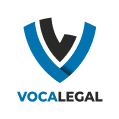How To Overcome Language Barriers in IP Litigation
In today’s globalized world, intellectual property (IP) disputes are increasingly common and complex, with parties from different countries and languages often involved. In such cases, language barriers can pose significant challenges to the litigation process, hindering effective communication and potentially affecting the outcome of the case. In this blog post, we will discuss the various ways in which language barriers can impact IP litigation and provide practical solutions for overcoming these barriers.
What Are The Impacts of Language Barriers in IP Litigation
The impact of language barriers in IP litigation can be significant. For instance, a non-English speaking party may face difficulties in understanding the legal proceedings, which may lead to misunderstandings, delays, and costly mistakes. The same applies to non-English speaking witnesses and experts, who may struggle to communicate effectively in court or provide accurate testimony.
In addition, language barriers can pose significant challenges in the translation of legal documents, which is crucial in IP litigation. Legal documents such as patents, trademarks, and copyrights require precise and accurate translations to ensure their validity and enforceability. Any errors or misunderstandings in the translation can lead to confusion and disputes, potentially affecting the outcome of the case.
Solutions for Overcoming Language Barriers in IP Litigation
There are several solutions available to overcome language barriers in IP litigation:
Professional Legal Translation Services
Professional legal translation services can provide high-quality translations of legal documents and court proceedings in different languages, ensuring accuracy and consistency. Such services employ skilled translators who are familiar with legal terminologies and can provide certified translations that are recognized by courts and legal authorities. This can help ensure that non-English speaking parties, witnesses, and experts can fully participate in the litigation process and provide accurate and reliable information.
Court Interpreters
Court interpreters can provide interpretation services for non-English speaking parties, witnesses, and experts during court proceedings. Court interpreters are trained professionals who can interpret legal terminology accurately and impartially. They can also help ensure effective communication between the parties and the court, reducing the risk of misunderstandings and errors.
Multilingual Legal Teams
Having a multilingual legal team can also help overcome language barriers in IP litigation. A legal team with members who are fluent in different languages can communicate more effectively with non-English speaking parties, witnesses, and experts. This can help build trust and rapport, facilitating better communication and reducing the risk of misunderstandings.
Technology-Based Solutions
Technology-based solutions such as machine translation and language-learning software can also help overcome language barriers in IP litigation. Machine translation can provide quick and easy translations of legal documents and communications, reducing the time and cost associated with professional translation services. Language-learning software can also help legal professionals learn a new language, enabling them to communicate more effectively with non-English speaking parties and experts.
Examples of Language Barriers in IP Litigation
The impact of language barriers in IP litigation is not limited to any specific country or jurisdiction. However, the following examples illustrate some of the challenges that can arise in the UK:
Patent Dispute
In a recent UK patent dispute, a Chinese company sued a UK-based company over the alleged infringement of its patent. The Chinese company provided evidence in Chinese, which had to be translated into English for the UK court. However, the translation provided by the Chinese company was found to be inaccurate, leading to delays in the case and additional costs.
Trademark Dispute
In another UK trademark dispute, a non-English speaking party was unable to understand the legal proceedings, leading to confusion and frustration. The party had to rely on a friend who was not familiar with legal terminologies to translate the proceedings, which led to inaccuracies and misunderstandings.
In conclusion, language barriers can pose significant challenges in IP litigation, affecting effective communication and potentially impacting the outcome of




